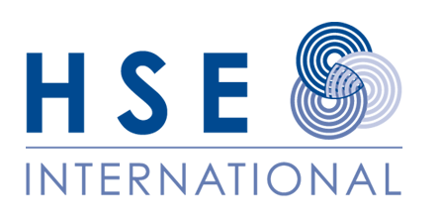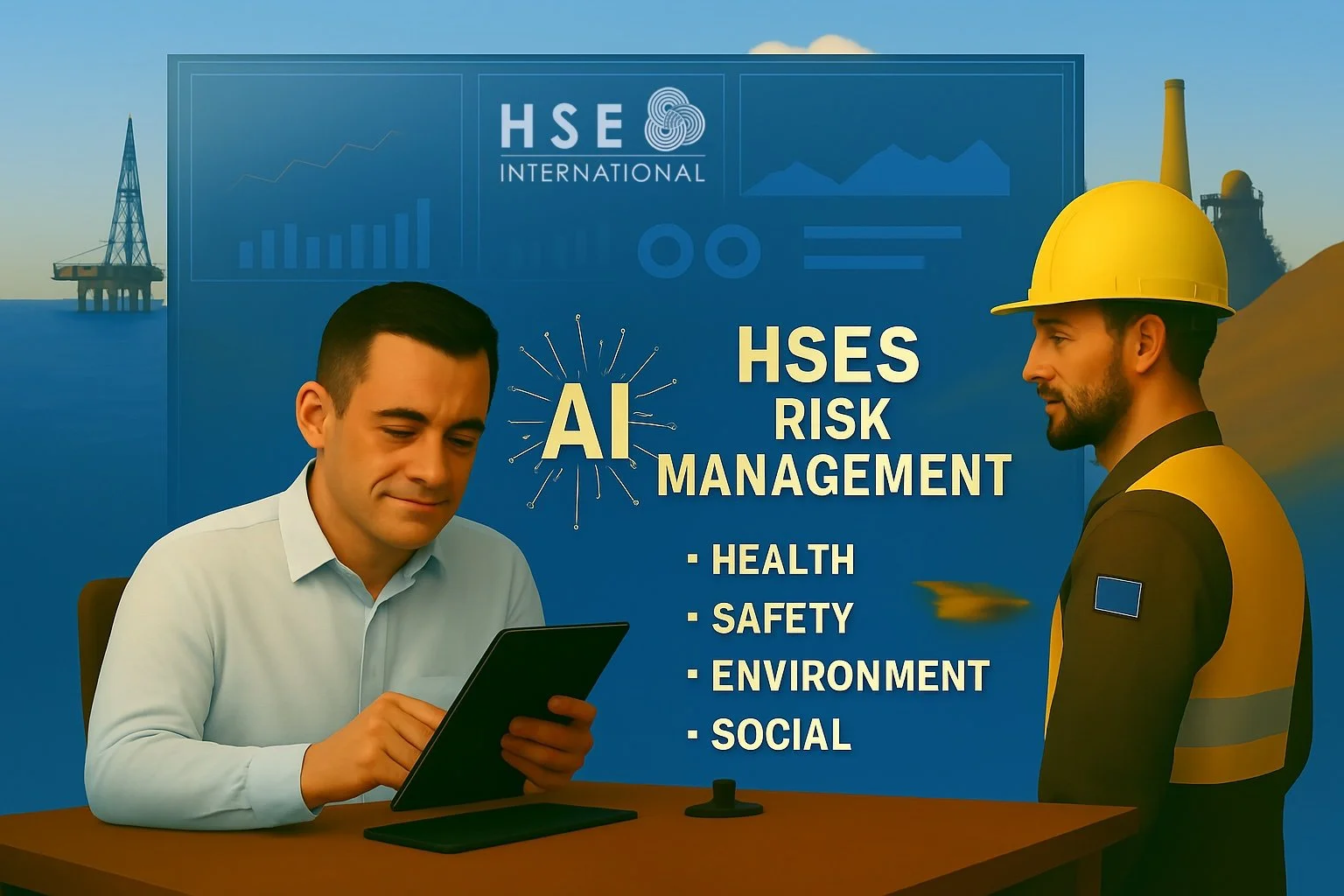For companies operating in high-risk, heavily regulated environments, sound management of health, safety, environmental, and social risks can drive profitability, boost productivity, and build long-term trust with regulators, employees, and communities.
AI is becoming a practical tool to help meet these goals. Far from being a future concept, it’s already helping companies prevent incidents, meet compliance obligations, improve operational efficiency and decision-making. Here are ten areas where AI is making or can make a difference:
1. Predicting Problems Before They Happen
AI algorithms mine past incidents, wearable data, and health records to forecast.
• Targeting high-risk areas: Machine learning models sort through data, analyze historical incidents to flag tasks, sites, or behaviors more likely to result in incidents, so teams can target safety measures before accidents happen.
• Protecting worker health: AI driven health monitoring taps wearables and health records to spot early signs of fatigue or illness, allowing preventive action that reduces medical leave and boosts productivity.
• Preventing equipment failures: Real time monitoring and predictive models detect vibration, temperature, or pressure anomalies before they escalate, helping schedule maintenance to avoid costly downtime, improve asset reliability, and ensure a safer work environment.
2. Monitoring in Real Time
AI gives companies 24/7 visibility into operations, helping them catch safety and compliance issues early.
• Live video monitoring: AI driven video analytics scan live feeds for missing protective gear, unsafe actions, or restricted-area entries, alerting supervisors in real time for quick action.
• Remote inspections: AI equipped drones safely assess hard-to-reach, remote, or hazardous areas, spotting facility damage or safety hazards without putting staff at risk.
• Environmental tracking: Continuous environmental monitoring uses AI to process air, water, and noise data, flagging compliance breaches and prompting corrective action before thresholds are breached.
3. Making Training More Effective
AI helps deliver safety training that fits how people actually learn, making it more relevant, engaging, and impactful.
• Personalized learning: Adaptive learning platforms use AI to tailor each training module to an individual’s pace and performance, addressing specific knowledge gaps and reducing time spent in training.
• Hands-on simulations: Virtual reality creates realistic emergency and hazard scenarios where employees can practice responding to emergencies or handling high risk tasks, enhancing retention and reducing errors.
• Effective resource allocation: Real time training insights give supervisors clear visibility into skill levels and compliance readiness, helping allocate resources effectively and reinforce a culture of safety.
4. Responding Faster, Learning Smarter
When something goes wrong, AI helps you act quickly and learn from it.
• Immediate action: AI triggers emergency protocols the moment something goes wrong, notifying response teams and sharing live data, reducing response times and limiting disruption and downtime.
• Post-incident analysis: After an event, automated analysis reviews data logs, sensor feeds, and reports to identify root causes, turning each event into a clear set of lessons.
• Continuous improvement: The insights gained from incident analysis feed back into procedures and training, helping to prevent repeat incidents, stay compliant, and enhance overall safety culture.
5. Reducing Environmental Impact
AI gives companies better control over environmental performance, supporting both compliance and long-term sustainability goals.
• Monitor conditions in real time: AI powered sensors track emissions, air and water quality, and noise levels continuously. Early alerts allow teams to respond quickly, address issues before they escalate, and stay within regulatory limits.
• Cut energy waste: AI analyzes usage patterns to uncover inefficiencies in equipment and processes, guiding adjustments that lower energy costs, reduce carbon footprint, and extend equipment life.
• Simplify sustainability reporting: Automate sustainability reporting so AI gathers emissions, resource use, and compliance data into audit ready reports. That saves team time, boosts accuracy and accountability, and makes it easier to show stakeholders you’re meeting your commitments.
6. Extending Oversight Beyond the Facility
AI enhances visibility in supply chains and logistics, helping manage risk, reduce impact, and protect reputation.
• Assess supplier risk: AI evaluates potential suppliers by analyzing vendor data, performance records, regulatory filings, and public information. This helps identify environmental or social risks, ensuring suppliers meet your standards before contracts are signed.
• Improve logistics: AI powered platforms plan routes and loads to maximize safety and efficiency, reducing fuel use, carbon footprint, operating costs, and transport incidents.
• Strengthen supply chain resilience: Real time systems provide complete visibility by integrating data from suppliers, carriers, and shipments. This enables early detection of delays or compliance breaches, allowing you to address issues before they impact operations or reputation.
7. Strengthening Compliance and Risk Management
AI helps companies keep up with evolving regulations and reduce exposure to operational and behavioral risks, without overwhelming compliance teams.
• Regulatory tracking: AI monitors changes in laws, regulations, and standards, flags what’s relevant, assesses their impact on operations, and helps teams stay compliant without constant manual tracking.
• Audit preparation: Automated tools gather, organize, and verify compliance records, making audits more efficient, reducing time spent chasing documentation, and freeing your team from manual paperwork while ensuring accuracy.
• Behavioral safety: AI analyzes behavior patterns, sensor data, or video to detect unsafe practices before they lead to incidents, enabling early feedback or retraining.
8. Listening and Acting with Accountability
AI helps companies gather and act on feedback from employees, communities, and stakeholders.
• Community engagement and sentiment analysis: AI scans social media and reviews feedback from field surveys to identify concerns early, spot trends that may require attention, and give the team the issues and time to address them. By using AI, companies can maintain open dialogue with stakeholders, ensuring that concerns are heard and addressed responsibly.
• Communicate clearly and transparently: Share clear, up to date performance data through AI powered automated dashboards that provide clear HSES performance in real time to management, regulators, investors, and the public.
• Build trust through action: Feed AI insights back into your processes to turn feedback into real actions, reinforcing trust and showing you take concerns seriously.
9. Balancing Technology with Ethics
Balancing technology with ethics ensures AI serves your HSES and sustainability goals without unintended harm.
• Establish ethical guardrails: Define clear ethical policies and guidelines for AI in HSES, spelling out how you will prevent bias, protect privacy, and respect worker rights.
• Keep humans in the loop: AI adds value through speed and pattern recognition, but keep humans in the loop with regular reviews and approval steps, so AI insights are tested against real world judgment and context.
• Secure your data and decisions: Establish transparent data governance and secure audit trails. The integration of AI with technologies like blockchain can keep records protected from tampering and build stakeholder trust.
10. Putting AI to Work in HSES
AI isn’t here to replace HSES and sustainability professionals. It’s here to support us. With the right tools, teams can act faster, make more informed decisions, and focus on what matters most.
• Better outcomes, fewer surprises: AI can help reduce incidents, improve compliance, and lower operational costs by catching risks earlier and improving visibility across operations.
• A stronger culture of responsibility: AI fosters a culture prioritizing safety, ethics, and sustainability. The integration of AI into HSES programs not only enhances profitability but also demonstrates a commitment to responsibility toward employees, communities, and investors.
• Prepared for what’s next: Companies that invest in AI for HSES now are better equipped to meet future regulatory challenges, demonstrate progress to stakeholders, and protect long term performance.

